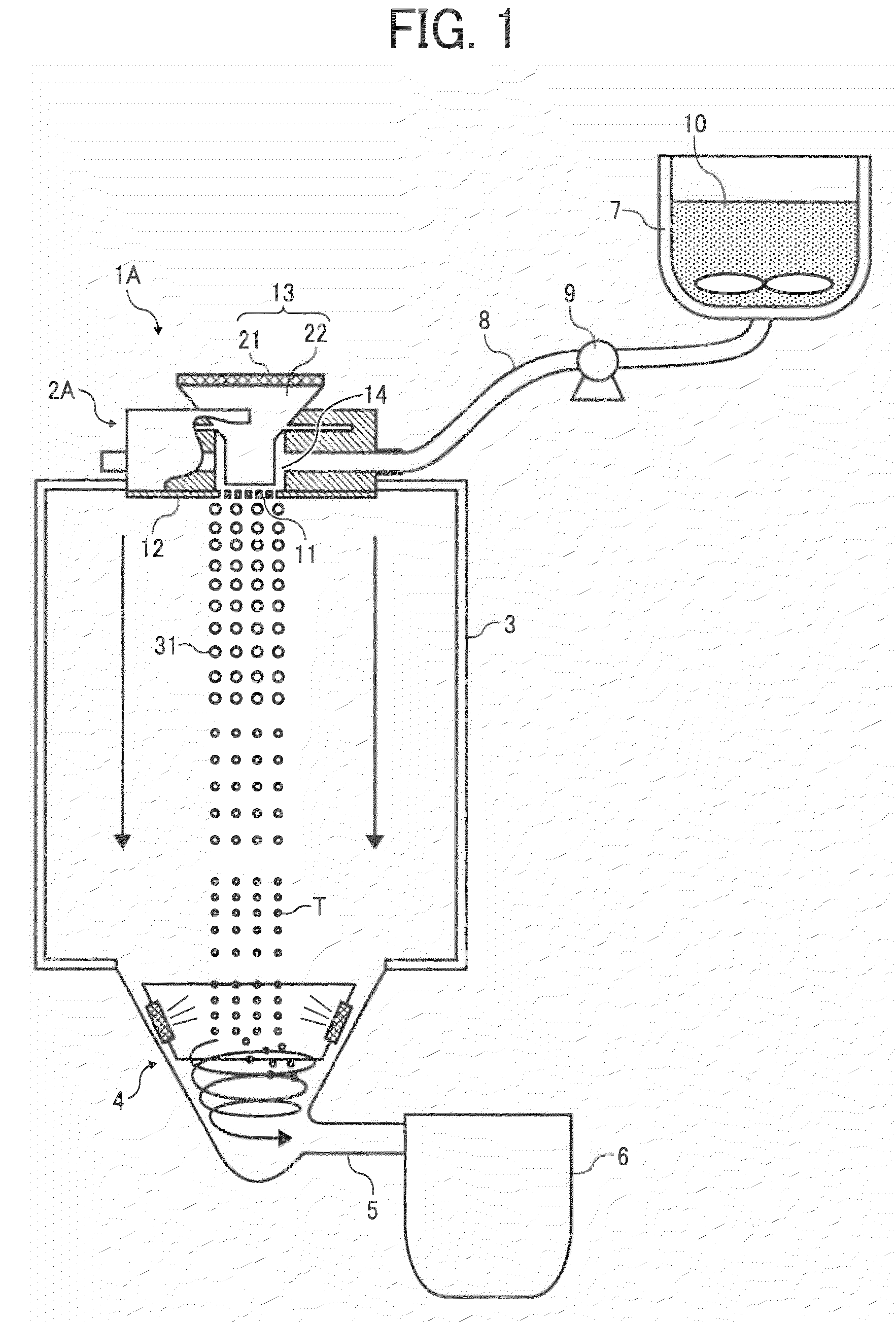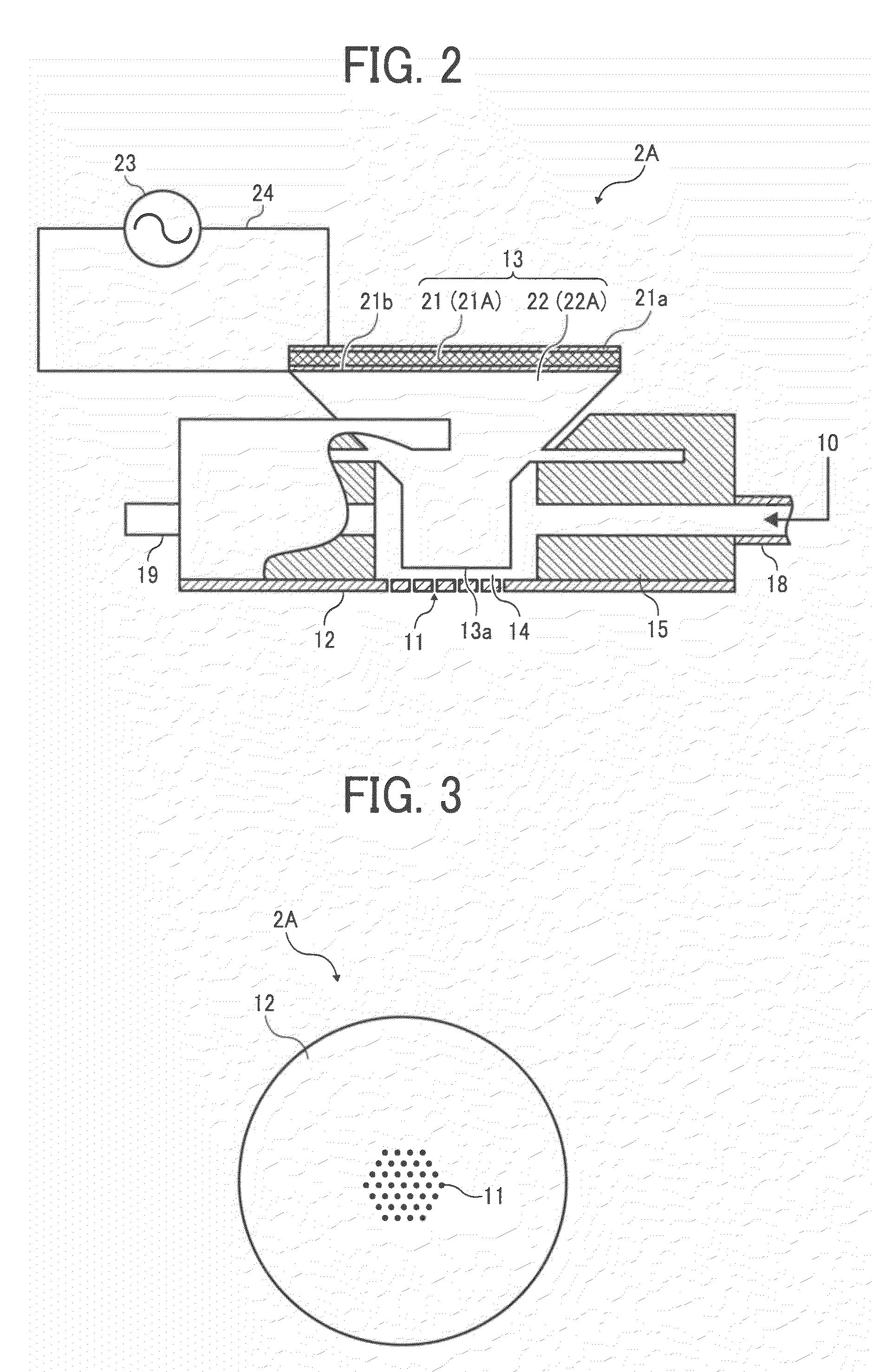Toner, developer, and image forming apparatus
a technology of toner and developer, applied in the field of toner, can solve the problems of compound color tone and safety problems, none of them satisfies safety standards, and the blade members are poor at removing spherical and small-size toner particles, etc., and achieves the effect of quick charge and easy removal with the blade members
- Summary
- Abstract
- Description
- Claims
- Application Information
AI Technical Summary
Benefits of technology
Problems solved by technology
Method used
Image
Examples
example 1
(Preparation of Colorant Dispersion)
[0237]At first, 20 parts of a carbon black (REGAL® 400 from Cabot Corporation) and 2 parts of a colorant dispersing agent (AJISPER® PB-821 from Ajinomoto Fine-Techno Co., Inc.) are primarily dispersed in 78 parts of ethyl acetate using a mixer equipped with agitation blades. The resultant primary dispersion is subjected to a dispersing treatment using a DYNO-MILL so that the colorant (i.e., carbon black) is more finely dispersed and aggregations thereof are completely removed by application of strong shear force. The resultant secondary dispersion is filtered with a filter (made of PTFE) having 0.45 μm-sized fine pores. Thus, a colorant dispersion is prepared.
(Preparation of Wax Dispersion)
[0238]A container equipped with a stirrer and a thermometer is charged with 30 parts of a polyester resin (having a weight average molecular weight (Mw) of 30,000 and a glass transition temperature (Tg) of 60° C., and including no THF-insoluble component), 10 pa...
example 2
(Preparation of Toner Components Liquid)
[0246]At first, 50 parts of the colorant dispersion, 100 parts of the wax dispersion, 337.5 parts of a 20% (solid basis) ethyl acetate solution of the polyester resin (having a weight average molecular weight (Mw) of 30,000 and a glass transition temperature (Tg) of 60° C., and including no THF-insoluble component) which is used for the wax dispersion, 10 parts of a 15% (solid basis) ethyl acetate solution of a polycondensation reaction product of a phenol with an aldehyde (FCA-2508N from Fujikura Kasei Co., Ltd.), and 502.5 parts of ethyl acetate are mixed for 10 minutes using a mixer equipped with agitation blades. Thus, a toner components liquid (2) including 10% by weight of solid components is prepared.
(Preparation of Toner)
[0247]The toner components liquid (2) is supplied to the liquid droplet injection unit 2B including a ring vibration unit of the toner production apparatus 1B illustrated in FIG. 11. The toner components liquid (2) is ...
example 3
(Preparation of Toner)
[0256]The toner components liquid (2) is supplied to the liquid droplet injection unit 2A of the toner production apparatus 1A illustrated in FIG. 1. The toner components liquid (2) is discharged into nitrogen atmosphere at 45° C. to form liquid droplets under the following conditions.
[0257]Flow rate of dried air: 2.0 L / min for nitrogen gas for dispersion, 30.0 L / min for inner dried nitrogen gas
[0258]Inner temperature: 38 to 40° C.
[0259]Vibration frequency: 180 kHz
[0260]Application voltage of piezoelectric substance: 10 V
[0261]The discharged liquid droplets are dried into solid particles. The solid particles are collected by cyclone and blow-dried for 1 day at 40° C., 90% RH and 3 days at 40° C., 50% RH.
[0262]Thus, a mother toner (c) is prepared. The mother toner (c) has a weight average particle diameter of 5.0 μm, a ratio (D4 / Dn) of the weight average particle diameter to the number average particle diameter of 1.07, and an average circularity of 0.96, and in...
PUM
 Login to View More
Login to View More Abstract
Description
Claims
Application Information
 Login to View More
Login to View More - R&D
- Intellectual Property
- Life Sciences
- Materials
- Tech Scout
- Unparalleled Data Quality
- Higher Quality Content
- 60% Fewer Hallucinations
Browse by: Latest US Patents, China's latest patents, Technical Efficacy Thesaurus, Application Domain, Technology Topic, Popular Technical Reports.
© 2025 PatSnap. All rights reserved.Legal|Privacy policy|Modern Slavery Act Transparency Statement|Sitemap|About US| Contact US: help@patsnap.com



